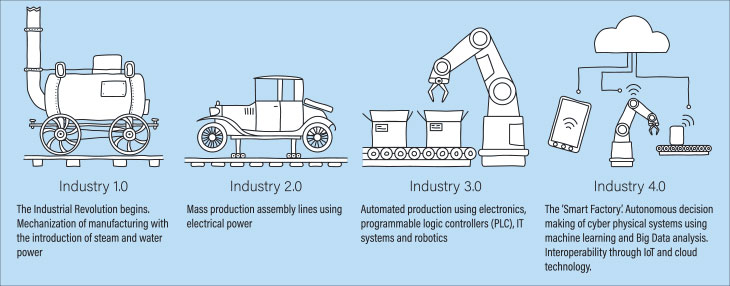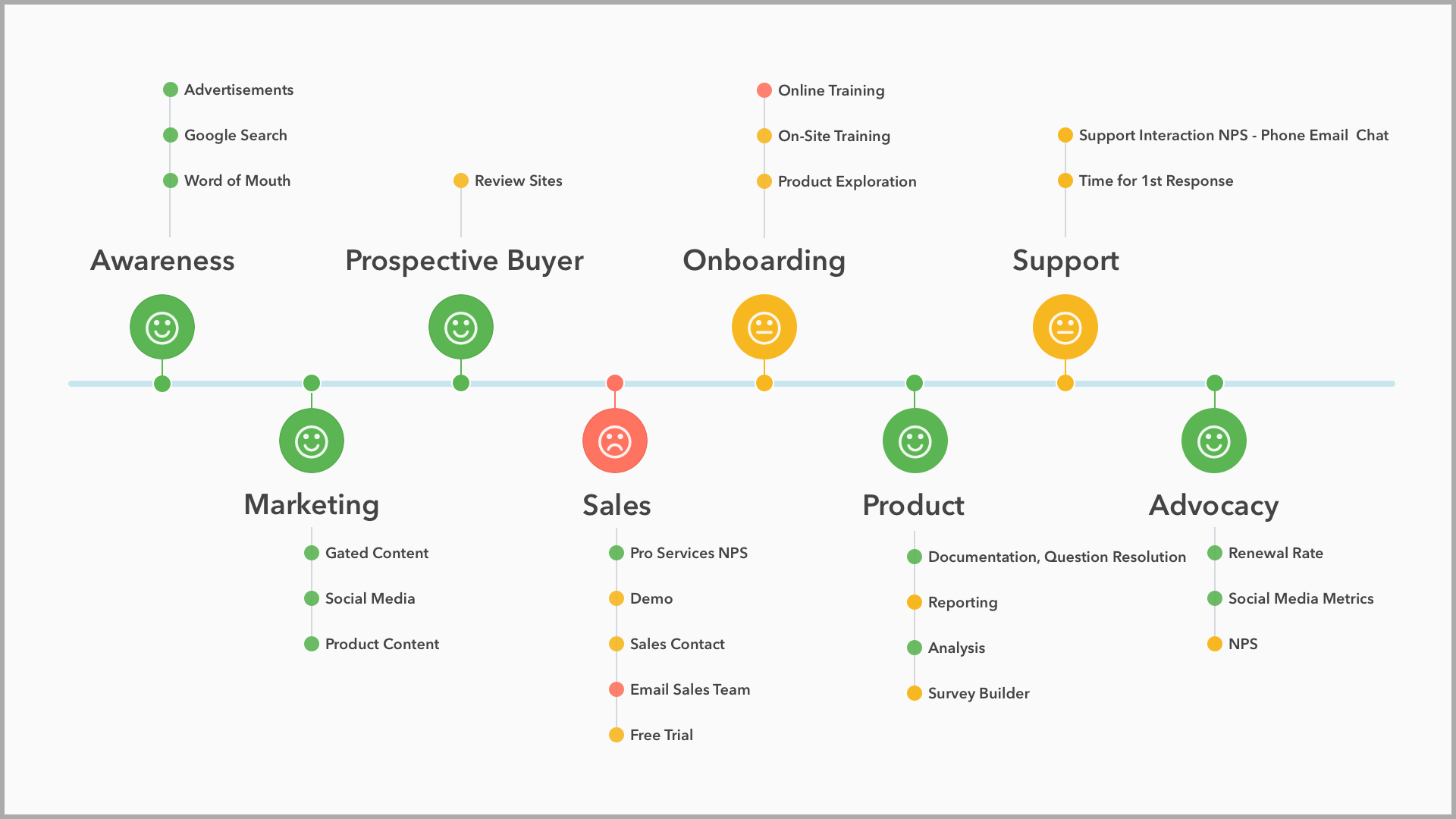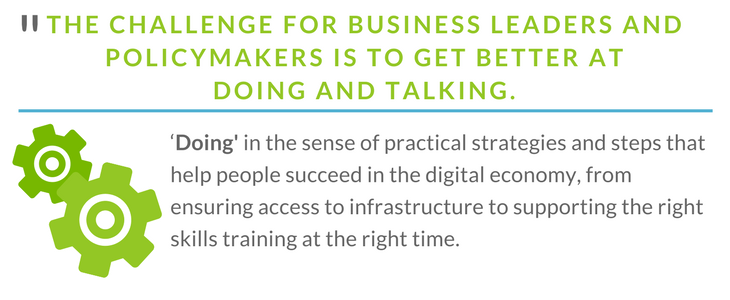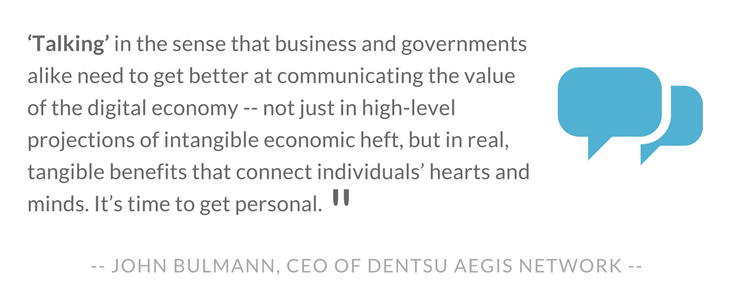Think of the digital economy in today’s society as the Industrial Revolution was to the late 1800s. Both are strategic transitions into new ways of conducting and running a business, improving processes and production methods, and developing new technologies along the way to achieve the bigger and the better more efficiently.
Just as the Industrial Revolution changed manufacturing processes, for example, the digital economy is changing the role and use of data.
The Industrial Revolution gave life to the use of machines across industries. The telephone, cotton gin, steam engine, and sewing machine all made their debut during this time period. Communication, agriculture, textiles, and transportation changed forever. 
The digital economy is not only changing the relationship between business and the consumer but calls for a standardization of moral responsibilities around the use of personal data, perhaps for the first time on the global scale.
This article will provide an overview of the digital economy and its risks. The objective of this article is to spark new ideas on how to elevate and communicate with your customers and iterate the importance and role that trust and transparency has.
What is the Digital Economy?
The digital economy is a societal revolution that is a direct byproduct of the mature use of data to make decisions, increase efficiency, and to innovate.
Our “always on” society, hyperconnectivity between people, business, devices, data, and processes are no longer a nice-to-have, but they have become the standard way of life, and as such, business and industry must keep pace. Enter, the rise of the digital economy.
The term itself was first used by business strategist and author Don Tapscott in his book, The Digital Economy: Promise and Peril in the Age of Networked Intelligence. He discussed the ways digital technology such as the internet was changing the way people interacted with one another and with society.
Tapscott’s 1997 book was used by businesses as a “survival manual” for adjusting their strategies to align with the rise of people going online and gave perspective to the enigma around operating in a globalized economy.
Companies such as Amazon, Google, Apple, and Facebook are seen as the earliest adopters and successes of this digital economic ecosystem taking shape.
Put simply, the digital economy is a maturation of society and threads through all aspects of daily life from how we interact with one another to what job skills are needed.
The full potential of the digital economy, the World Economic Forum estimates, could mean new scientific research and breakthroughs, new job opportunities, and never-before-seen economic growth.
For business, the ecosystem of the digital economy changes:
- Traditional infrastructures and models
- Approach to data privacy and security
- Meeting enhanced consumer demand and expectation
- The velocity of decisions and growth
- Connection access and availability
Risks of the Digital Economy
With more opportunity comes more risks. Being aware of the risks associated with this shift will not be enough.
Businesses should prepare and proactively structure themselves to these risks as best they can to avoid any detrimental impacts such as losing great employees and loyal customers, becoming irrelevant in the market, and losing their edge on the competition.
Risks of digitization include:
- Impact on jobs
- The use of personal data
- A backlash against technology
- Loss of trust
- More opportunities for attacks on data
Competing in the Digital Economy Means Adopting New Approaches
The year-over-year momentum of digitization proves its value to businesses. Yet, a recent McKinsey digital global survey found that only 8 percent of companies believe their business model will remain economically viable through digitization.
“The reason, we believe, is that digital transformation is uniquely challenging, touching every function and business unit while also demanding the rapid development of new skills and investments that are very different from business as usual,” says McKinsey Partner Paul Willmott and Principles Tunde Olanrewaju and Kate Smaje.
And with the speed and capabilities of new technologies, staying ahead of the trends new tech creates and the disruption it causes is critical. Business value and relevance is retained by companies who have a strategic approach that is complementary to this shift.
Experts from MIT Sloan Research have found that companies that are making strides to adapt to the digital economy are 26 percent more profitable than others in their industry who are not.
As such, those early adopting companies will have long-term market share than those who resist the change.
“Eventually, what was once radical is normal, and unprepared incumbents run the risk of becoming the next Blockbuster. Others, which have successfully built new capabilities (as Burberry did in retailing), become powerful digital players,” says McKinsey Partners Martin Hirt and Willmott.
How to be Successful in the Digital Economy
Develop a Unified Company Definition of “Digital”
When used in different contexts, the term digital can mean different things to different people, companies, and industries.
McKinsey researchers echo that having a “fuzzy definition” of what leaders mean by digital is a top pitfall of digital strategies that are developed to align with the digital economy.
“When we talk with leaders about what they mean by digital, some view it as the upgraded term for what their IT function does. Others focus on digital marketing or sales. But very few have a broad, holistic view of what digital really means,” says digital strategy experts at McKinsey.
Without a clear definition of the term digital, connecting a digital strategy to your business will remain a constant struggle.
Adjust the Market Strategy
Sometimes accepting the reality of change results in ignoring it all together in hopes that an out-of-sight-out-of-mind approach will stop the change from happening.
Yet, taking this approach when looking to become a competitive player in the digital economic landscape is a formula that only calculates failure.
Establishing a digital market strategy will not only help you create the edge you need to push out the competition but will allow you to have a clear direction forward.
And while developing a traditional market strategy isn’t much different than developing a digital marketing strategy, the pace of change in the digital economy is much faster, relentless, uncertain, and complex.
Adjusting a brick-and-mortar based market strategy will, of course, be inherently more challenging than adjusting a market strategy that was designed for online-based businesses, but consider who more successful and who will thrive in this new age.
Top considerations to factor into a digital market strategy include:
- In the next five years, what direction is your industry projected to take?
- What role does your company want to play in that future?
- Set your goals around the results of the first two bullets and build out a tactical plan on how to reach those goals.
- How well do you know your customers and target audience? Get to know them and then some. Adjust your strategy to meet and exceed their wants, needs, and expectations as well as how your product/service/company solves their pain points.
- Identify what marketing tools you may need to prove ROI and performance in digital channels such as social media and online advertising.
- Leverage key tactics to help drive awareness, increase customer engagement, improve conversion, and up retention rates: digital advertising, search marketing, content marketing, social media marketing, and email marketing.
Become and Remain Customer-Centric
Like with any relationship, the one you develop with your customers will need regular management. In the digital economy, the average customer is smarter, savvier, and more suspicious of being “marketed” to not to mention their digital empowerment.
Capturing and sustaining their attention is harder than ever, but the rewards of winning them over are more rewarding.
When a customer is loyal to you, the benefits to the business are worth the cat-and-mouse chase. You’ll see increased retention, referrals, and satisfaction — even better feedback for product enhancements.
Yet, creating rich experiences time and again is no doubt a challenge and requires a more investment of time, money, and energy.

From the first point of interaction through to retaining customers, companies must provide an exceptional and holistic customer experience. And doing so is a business-wide effort.
Map out your customer journey and break it down into segments to provide a greater focus and clarity on where the biggest improvements in your customer experience program can be made to provide the greatest benefits to your bottom-line.
Related: How Vertafore Maintains Customer Experience Excellence
Create a culture that is data-driven and transparent
“Companies must rethink their structures and culture to better deal with new market environments and business models,” says Lindsey Anderson and Irving Wladawksy-Berger of the Harvard Business Review. “The hierarchical organization that prevailed in the 20th century’s production-oriented industrial economy will not work in the more global and fast-changing digital economy.”
Companies who are thriving in this space, such as Amazon and Google share the following culture traits:
- Data-driven
- Transparent
- Collaborative
- More action, better words
Company culture sets the tone for others to follow and should influence the behavior of not only employees but customers. To sustain culture dynamics, companies must consistently reinforce and follow-through with every tenant of its culture.

Trust, privacy, and security are more important than ever
Being data-driven comes with some scary consequences. The more data a company leverages, the more opportunity there is for that data to become compromised. Cybersecurity and privacy programs that are built to mitigate data-related risks should go hand-in-hand with becoming data-driven.
Communicate all security and privacy programs to employees and customers in order to build and keep their trust. Digitization makes so many more opportunities available, but also the risks are more detrimental than ever. Having a solid foundation of trust is critical.
